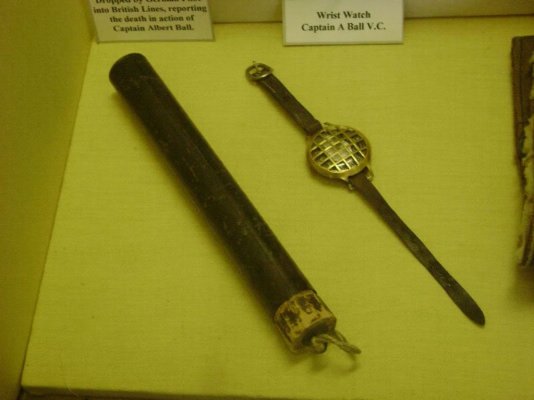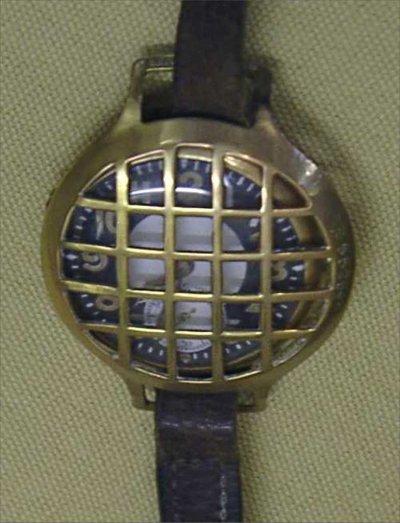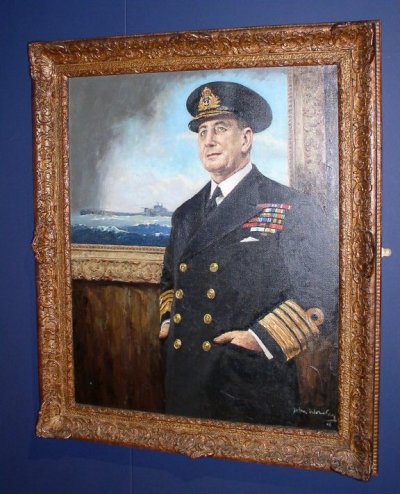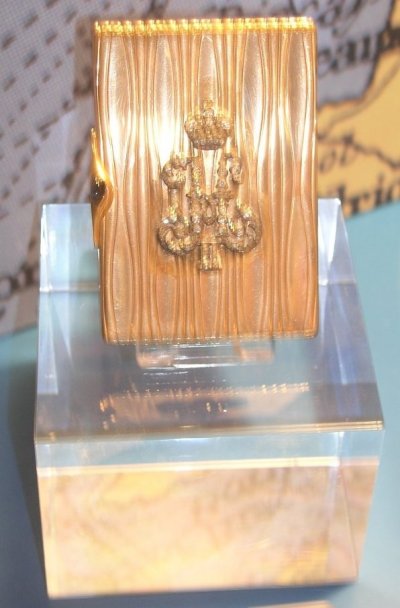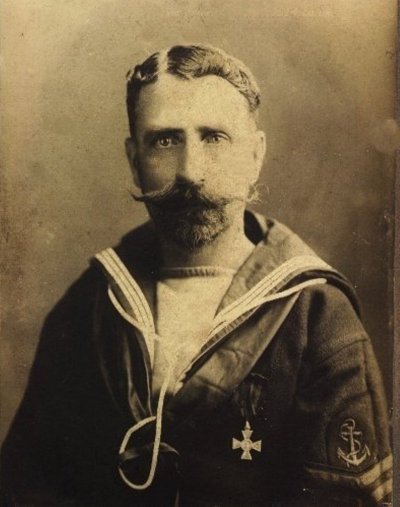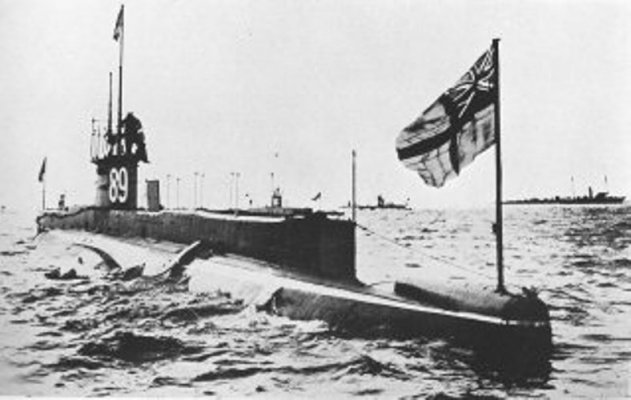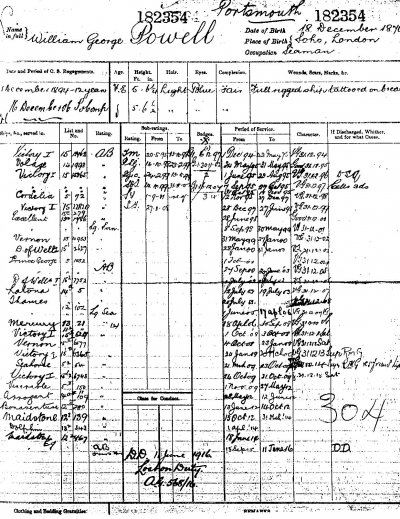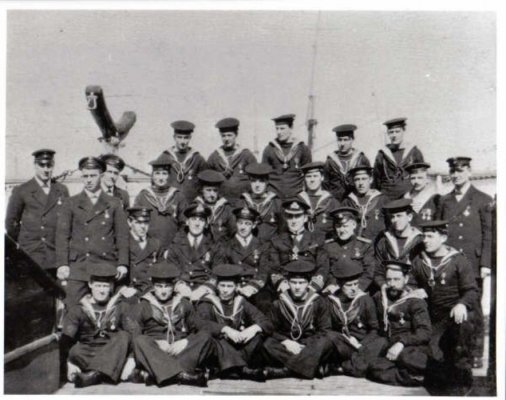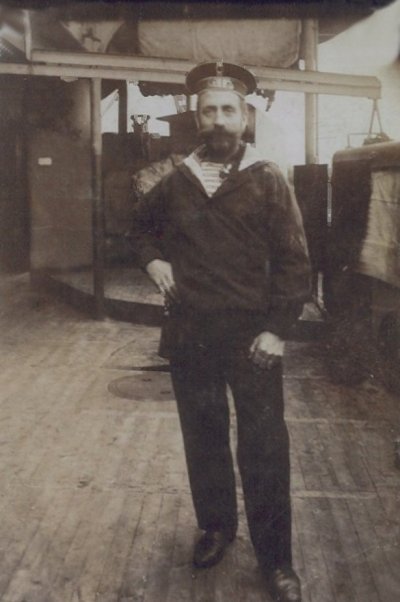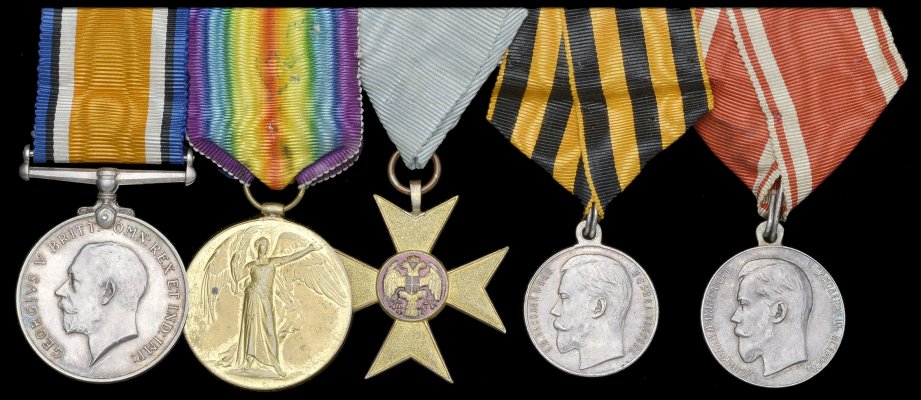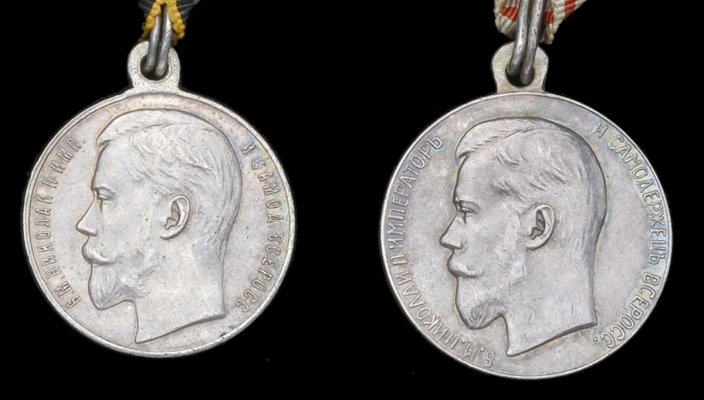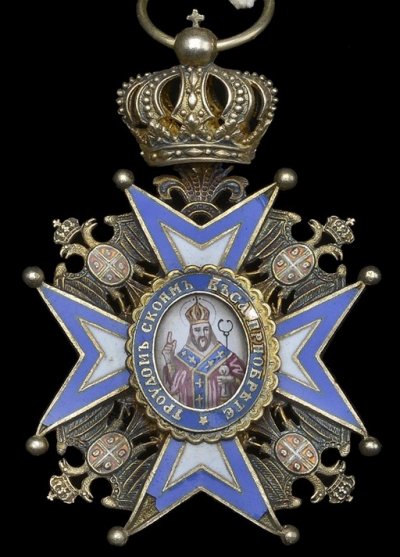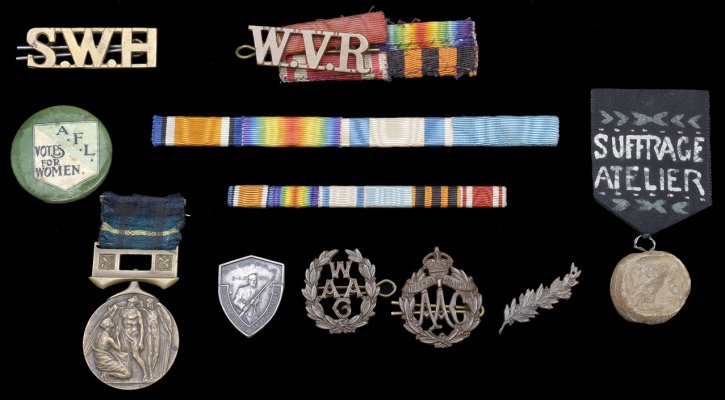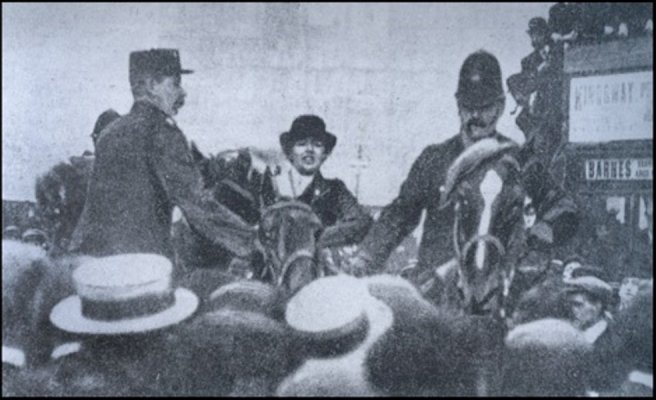Вы используете устаревший браузер. Этот и другие сайты могут отображаться в нём некорректно.
Вам необходимо обновить браузер или попробовать использовать другой.
Вам необходимо обновить браузер или попробовать использовать другой.
Георгиевский крест англичанина
- Автор темы Андрей Пустоваров
- Дата начала
Igor Ostapenko
Участник АК
Igor Ostapenko
Участник АК
тут http://sammler.ru/index.php?showtopic=12261 как-то разжевывать пришлось 
фрачная колодка - в музее

фрачная колодка - в музее
Вложения
Igor Ostapenko
Участник АК
Igor Ostapenko
Участник АК
раз тут мы и орден Св. Георгия на англичан рассматриваем
А куда ж его, если не сюда?

тут http://sammler.ru/index.php?showtopic=12261 как-то разжевывать пришлось
Первые полторы страницы завораживают


Igor Ostapenko
Участник АК
Вот немного информации о группе и кавалерше на аглицком
British War and Victory Medals (V. L. Holme); Scottish Women’s Hospitals 1914-18 Service Medal; Serbia, Order of St. Sava, 2nd type, Fourth Class breast badge, silver-gilt and enamel; Serbia, Cross of Mercy 1912; Russia, St. George’s Medal for Bravery, Fourth Class, the reverse officially numbered ‘1029044’; Russia, Medal for Zeal, small silver, on St. Stanislaus riband.
Vera “Jacko” Holme was born in Birkdale, Lancashire, in 1881, the daughter of a timber merchant and, on attaining adulthood, journeyed south to pursue her interests in singing and the violin.
Suffragette
A member of the chorus of the Doyly Carte Opera Company at the Savoy Theatre by 1908, she also became a member of the Actresses’ Franchise League, one of a number of booming Suffragette movements - fellow founding members including Sybil Thorndike and Lily Langtry. Described by Emmeline Pankhurst as ‘a noisy, explosive young person, frequently rebuked by her elders for lack of dignity’, she was a natural candidate for membership of the more militant Women’s Social and Political Union (W.S.P.U.), and quickly gained attention for her campaign work.
In May 1909, she interrupted a speech being made by Augustine Birrell, M.P., and Secretary of State for Ireland, having managed to conceal herself in the chosen venue, with a colleague, Elsie Howey, on the afternoon of the rally - high up on a narrow platform behind the organ pipes. She later recounted events in a musical piece set to the tune of the “Lost Chord”, from which the following lyrics have been taken:
‘Our voices rang out from the twilight,
But nowhere could we be found;
They looked from floor to ceiling -
The stewards came searching round.
We asked for votes for women,
And that justice should be done;
But Birrell he would not answer,
And the audience made such fun!’
In August 1909, when a wealthy supporter of the W.S.P.U. purchased Mrs. Pankhurst a motor car, Holme was appointed her chauffeuse, having gained knowledge of such matters while touring the provinces with a theatrical company. And she made a colourful companion, wearing an eye-catching uniform in the Union’s colours of purple, green and white, with a peak cap decorated with the R.A.C’s Badge of Proficiency.
But in between such duties, Holme continued to support the W.S.P.U’s campaign of disobedience, and was among 159 women arrested in November 1910, when a deputation to Downing Street smashed the windows of Cabinet Ministers’ homes. But on appearing at Bow Street Court she was charged with obstruction only and, as no evidence was offered by the prosecution, she was discharged.
Notwithstanding this early encounter with the Law, her next appearance, at a Caxton Hall gathering, was truly spectacular - for she was charged with delivering a message of defiance to the Prime Minister after his earlier refusal to meet a deputation at Downing Street. Dressed in riding habit and tricolour sash, she rode from the Hall at a canter, but her progress was slowed by a huge crowd, through which nonetheless her horse pushed a passage until she was stopped by the police at St. Stephen’s Church - where she handed over the message for the Prime Minster to mounted Inspector.
And she was back in the thick of it in November 1911 when, in opposition to the proposed Manhood Suffrage Bill, she was among the demonstrators to gather opposite Parliament Street. Fierce struggles having broken out, Holme dashed straight at a mounted policeman, seized his horse’s bridle and tried to turn its head against the cordon - she was dragged off by the police and then arrested after another struggle. Charged with obstruction once more, she appeared at Cannon Row, informing the magistrate that “as the Government would not accept them [women] as citizens, no-one could blame them for acting as outlaws.” She was duly sentenced to five days imprisonment, having declined an alternative offer of a five shilling fine.
The Scottish Women’s Hospital - Serbia - Prisoner
In the period leading up to the outbreak of hostilities, Holme had moved in with her lover, Mrs. Evelina Haverfield, a relationship that would have a direct bearing on her subsequent activities - for, in August 1914, Haverfield founded the Women’s Emergency Corps, an organisation that actively encouraged women to serve as doctors, nurses and messengers. Holme’s became a Major in the newly established Corps, in addition to serving in Haverfield’s Women’s Volunteer Corps, appointments that ultimately led to her being given charge of the Scottish Women’s Hospital (S.W.H.) transport.
Spurned by a sneering British establishment, the founder of the S.W.H., Dr. Else Inglis, remained unmoved, and concentrated her resources on our Allies, such resources being supported by Haverfield’s Corps - thus the gallant nursing parties that set out for Serbia in 1915, the first under Dr. Eleanor Soltau to Kraguievatz in January, and the second to Valjievo in April, at which latter place Holme arrived in a large seven-seater staff car, with a Motor Ambulance donated by Welsh Suffragists, that June. At the time of her arrival fighting had ceased for what was to be a more peaceful summer after the Serbians had pushed back the invading Austrians at the Battle of the Ridges. She frequently drove Dr. Inglis on the many expeditions to try and acquire necessary supplies. On one occasion they set off together to try and locate a pair of scales for weighing drugs. Finding an appropriate set in an apothecary's shop the women found he was very reluctant to part with them as they were required for his own business. However, he was ‘persuaded’ to change his mind when Dr. Inglis commented “It is for your men that we need them,” and parted with the scales for no charge.
By September there were strong rumours of amassing forces of several nations preparing to invade. Although contingency plans were drawn up for the escape of the women, Dr. Inglis was determined to stick by the Serbians as long as they fought and retreat them if necessary burning all their stores. Their worst expectations were justified when in November 1915 Serbia was the target of a German-Austrian invasion. Some women chose to evacuate by trekking across the Albanian mountains but others were allocated to stay, Dr. Inglis and Holme among them. Although their freedom was short-lived as they were taken prisoner by the invading forces shortly afterwards, nonetheless they continued their work of helping the sick and wounded in harsh conditions with medical supplies and food very scarce.
During this period, when the news came that they were to be moved once again, Doctors Haverfield and Corbetts, together with Holme, concocted a plan to stay behind by hiding in a peasant cottage with assistance from the locals and with the intention of emerging when eventually the Allies arrived. They remained concealed for several days, but the Unit was not moved and then, in circumstances that are far from clear, Dr. Inglis came with two Austrian guards to get the three fugitives - Inglis's biographer comments that maybe she was fearful of reprisals on the small village in which they were hidden. Eventually in February 1916 the women were taken to Budapest, then Vienna and finally Switzerland from where they were repatriated.
British War and Victory Medals (V. L. Holme); Scottish Women’s Hospitals 1914-18 Service Medal; Serbia, Order of St. Sava, 2nd type, Fourth Class breast badge, silver-gilt and enamel; Serbia, Cross of Mercy 1912; Russia, St. George’s Medal for Bravery, Fourth Class, the reverse officially numbered ‘1029044’; Russia, Medal for Zeal, small silver, on St. Stanislaus riband.
Vera “Jacko” Holme was born in Birkdale, Lancashire, in 1881, the daughter of a timber merchant and, on attaining adulthood, journeyed south to pursue her interests in singing and the violin.
Suffragette
A member of the chorus of the Doyly Carte Opera Company at the Savoy Theatre by 1908, she also became a member of the Actresses’ Franchise League, one of a number of booming Suffragette movements - fellow founding members including Sybil Thorndike and Lily Langtry. Described by Emmeline Pankhurst as ‘a noisy, explosive young person, frequently rebuked by her elders for lack of dignity’, she was a natural candidate for membership of the more militant Women’s Social and Political Union (W.S.P.U.), and quickly gained attention for her campaign work.
In May 1909, she interrupted a speech being made by Augustine Birrell, M.P., and Secretary of State for Ireland, having managed to conceal herself in the chosen venue, with a colleague, Elsie Howey, on the afternoon of the rally - high up on a narrow platform behind the organ pipes. She later recounted events in a musical piece set to the tune of the “Lost Chord”, from which the following lyrics have been taken:
‘Our voices rang out from the twilight,
But nowhere could we be found;
They looked from floor to ceiling -
The stewards came searching round.
We asked for votes for women,
And that justice should be done;
But Birrell he would not answer,
And the audience made such fun!’
In August 1909, when a wealthy supporter of the W.S.P.U. purchased Mrs. Pankhurst a motor car, Holme was appointed her chauffeuse, having gained knowledge of such matters while touring the provinces with a theatrical company. And she made a colourful companion, wearing an eye-catching uniform in the Union’s colours of purple, green and white, with a peak cap decorated with the R.A.C’s Badge of Proficiency.
But in between such duties, Holme continued to support the W.S.P.U’s campaign of disobedience, and was among 159 women arrested in November 1910, when a deputation to Downing Street smashed the windows of Cabinet Ministers’ homes. But on appearing at Bow Street Court she was charged with obstruction only and, as no evidence was offered by the prosecution, she was discharged.
Notwithstanding this early encounter with the Law, her next appearance, at a Caxton Hall gathering, was truly spectacular - for she was charged with delivering a message of defiance to the Prime Minister after his earlier refusal to meet a deputation at Downing Street. Dressed in riding habit and tricolour sash, she rode from the Hall at a canter, but her progress was slowed by a huge crowd, through which nonetheless her horse pushed a passage until she was stopped by the police at St. Stephen’s Church - where she handed over the message for the Prime Minster to mounted Inspector.
And she was back in the thick of it in November 1911 when, in opposition to the proposed Manhood Suffrage Bill, she was among the demonstrators to gather opposite Parliament Street. Fierce struggles having broken out, Holme dashed straight at a mounted policeman, seized his horse’s bridle and tried to turn its head against the cordon - she was dragged off by the police and then arrested after another struggle. Charged with obstruction once more, she appeared at Cannon Row, informing the magistrate that “as the Government would not accept them [women] as citizens, no-one could blame them for acting as outlaws.” She was duly sentenced to five days imprisonment, having declined an alternative offer of a five shilling fine.
The Scottish Women’s Hospital - Serbia - Prisoner
In the period leading up to the outbreak of hostilities, Holme had moved in with her lover, Mrs. Evelina Haverfield, a relationship that would have a direct bearing on her subsequent activities - for, in August 1914, Haverfield founded the Women’s Emergency Corps, an organisation that actively encouraged women to serve as doctors, nurses and messengers. Holme’s became a Major in the newly established Corps, in addition to serving in Haverfield’s Women’s Volunteer Corps, appointments that ultimately led to her being given charge of the Scottish Women’s Hospital (S.W.H.) transport.
Spurned by a sneering British establishment, the founder of the S.W.H., Dr. Else Inglis, remained unmoved, and concentrated her resources on our Allies, such resources being supported by Haverfield’s Corps - thus the gallant nursing parties that set out for Serbia in 1915, the first under Dr. Eleanor Soltau to Kraguievatz in January, and the second to Valjievo in April, at which latter place Holme arrived in a large seven-seater staff car, with a Motor Ambulance donated by Welsh Suffragists, that June. At the time of her arrival fighting had ceased for what was to be a more peaceful summer after the Serbians had pushed back the invading Austrians at the Battle of the Ridges. She frequently drove Dr. Inglis on the many expeditions to try and acquire necessary supplies. On one occasion they set off together to try and locate a pair of scales for weighing drugs. Finding an appropriate set in an apothecary's shop the women found he was very reluctant to part with them as they were required for his own business. However, he was ‘persuaded’ to change his mind when Dr. Inglis commented “It is for your men that we need them,” and parted with the scales for no charge.
By September there were strong rumours of amassing forces of several nations preparing to invade. Although contingency plans were drawn up for the escape of the women, Dr. Inglis was determined to stick by the Serbians as long as they fought and retreat them if necessary burning all their stores. Their worst expectations were justified when in November 1915 Serbia was the target of a German-Austrian invasion. Some women chose to evacuate by trekking across the Albanian mountains but others were allocated to stay, Dr. Inglis and Holme among them. Although their freedom was short-lived as they were taken prisoner by the invading forces shortly afterwards, nonetheless they continued their work of helping the sick and wounded in harsh conditions with medical supplies and food very scarce.
During this period, when the news came that they were to be moved once again, Doctors Haverfield and Corbetts, together with Holme, concocted a plan to stay behind by hiding in a peasant cottage with assistance from the locals and with the intention of emerging when eventually the Allies arrived. They remained concealed for several days, but the Unit was not moved and then, in circumstances that are far from clear, Dr. Inglis came with two Austrian guards to get the three fugitives - Inglis's biographer comments that maybe she was fearful of reprisals on the small village in which they were hidden. Eventually in February 1916 the women were taken to Budapest, then Vienna and finally Switzerland from where they were repatriated.
Russia - Clandestine Messenger
Again the story of Holme was to be very much that of the Serbian Forces once she had again volunteered for service in Russia with the S.W.H. Together with Dr. Inglis, who had been asked by the Serbian Minister in London to supply one or more Field Hospitals for the Serbian Division in Russia, just over 70 women set sail for Archangel in August 1916. The Division was manned mainly by Serbs who were Austrian Hungarian subjects and who, in the main, had been taken prisoner by the Russians after they had voluntarily surrendered rather than fight their co-nationals. In May 1915 considerable numbers had volunteered for service with the Serbian Army and by arrangement with the Russian Government had been transported to Serbia. However, on Bulgaria's entry into the War, several thousand were still left in Odessa and Serbian Officers were sent over from Corfu to organise them into a military unit to serve with the Russian Army.
When the women arrived in Odessa from Archangel they found that the Serbian First Division had just been in action together with the Russians and had suffered massive casualties of some thousand wounded. Having undertaken the immense task of making arrangements for the Serb and Russian wounded who were at Odessa, the Women's Unit was then despatched to the front, leaving for Reni in September they travelled to Czernavoda then to Mejidia.
The circumstances in which the women drivers, including Holme, worked were difficult. Collecting the ill and injured involved constant battles to get the vehicles through the mud, through areas decimated by shell and still smoking with ‘enemy planes visiting us daily, dealing death and destruction everywhere ... Most of our drivers have been in the midst of falling bombs whilst carrying wounded.’
Further intimations of military reversals came in October with news of a retreat and an order to the women to remove the bulk of their equipment and withdraw. Not surprisingly during the withdrawal process the S.W.H. women continued to do everything possible to tend the sick and wounded.
Back at Reni, news began to filter through of significant developments in the Russian political situation as a consequence of the Revolution. There were constantly changing troops in the area and the women were sometimes viewed as potential spies - with at least one of their number being arrested. The situation was very disturbing to the Serb Command who feared that they would not be backed in action by the Russians and that they were about to be used as a battle fodder when a command came from Russian H.Q. that they were needed on the Romanian Front. This order confirmed Dr. Inglis's worst fears and as a constant champion of the Serbs she devised a plan to get a message back home to apprise the Government of the true state of affairs. Central to her plan were Holme and a Miss Robinson who were about return to England. They were sent back with a message setting out the political situation and how it affected the Serbian Division. As it was too dangerous to carry a written message, Miss Robinson, a school teacher, committed it to memory and, as an aide memoire, a piece of paper the size of a postage stamp and bearing ten main headings was concealed in Vera Holme's packet of Army & Navy Stores “Best Needles” - Holme herself was said to have commented that she could not remember anything herself unless it was set to music. They left Reni in August 1917 and arrived home in October. After retyping the report, the women laid it personally before Lord Robert Cecil of the Foreign Office and Lord Derby, Secretary of State for War, who were already receiving reports on the situation from the British Consul at Odessa, making clear that the rapidly ailing Dr. Inglis would not leave Russia without some guarantee for the safe evacuation of the Serbs. This was achieved by the end of October and Dr. Inglis and the remaining women left Russia before the end of the year.
At the end of the War, Vera's knowledge of the S.W.H.’s role in Serbia and Russia was put to good use as she contributed to the publication, The History of the Scottish Women's Hospital (Eva Shaw McLaren, 1919), by drawing the maps which illustrate the work and no doubt by providing other information.
Holme had received her St. George’s Medal for Bravery from Prince Dolgorcky at Reni in March 1917.
The latter years
Sadly the dedicated and gallant Evelina Havefield died of pneumonia in Serbia in 1920 - she left Holme with an annual income of £50 for life in her Will, but access to their possessions in the house they had shared in the Kent was less of a formality, Holme having to contact the Executors with a list of the items she wanted back, among them a bed ‘with carved sides (inscribed with) E.H. and V.H.’
Moving north to Perthshire in the mid-1920s, Holme shared a house with two friends who had served with her in the War, and was active in her local community, organising a drama club and onetime serving as President of her local Women’s Institute. A keen photographer and fly-fisherman, she also journeyed widely, giving talks about her travels and experiences to raise money for causes in which she took a close interest - and such travel included trips back to Serbia.
She died in Glasgow in January 1969, aged 87 years.
Sold with a quantity of related badges and riband bars, including a most unusual ‘Suffrage Atelier’ award, being a plaster cast of an ancient coin with hand decorated riband, an A.F.L. “Votes for Women” badge, by Merchants Portrait Co., Kentish Town Road, London, bronze Great War period W.V.R. (Women’s Volunteer Reserves), S.W.H., W.A.A.G. and Q.M.A.A.C. badges, and a Serbian commemorative badge dated 1931.
Again the story of Holme was to be very much that of the Serbian Forces once she had again volunteered for service in Russia with the S.W.H. Together with Dr. Inglis, who had been asked by the Serbian Minister in London to supply one or more Field Hospitals for the Serbian Division in Russia, just over 70 women set sail for Archangel in August 1916. The Division was manned mainly by Serbs who were Austrian Hungarian subjects and who, in the main, had been taken prisoner by the Russians after they had voluntarily surrendered rather than fight their co-nationals. In May 1915 considerable numbers had volunteered for service with the Serbian Army and by arrangement with the Russian Government had been transported to Serbia. However, on Bulgaria's entry into the War, several thousand were still left in Odessa and Serbian Officers were sent over from Corfu to organise them into a military unit to serve with the Russian Army.
When the women arrived in Odessa from Archangel they found that the Serbian First Division had just been in action together with the Russians and had suffered massive casualties of some thousand wounded. Having undertaken the immense task of making arrangements for the Serb and Russian wounded who were at Odessa, the Women's Unit was then despatched to the front, leaving for Reni in September they travelled to Czernavoda then to Mejidia.
The circumstances in which the women drivers, including Holme, worked were difficult. Collecting the ill and injured involved constant battles to get the vehicles through the mud, through areas decimated by shell and still smoking with ‘enemy planes visiting us daily, dealing death and destruction everywhere ... Most of our drivers have been in the midst of falling bombs whilst carrying wounded.’
Further intimations of military reversals came in October with news of a retreat and an order to the women to remove the bulk of their equipment and withdraw. Not surprisingly during the withdrawal process the S.W.H. women continued to do everything possible to tend the sick and wounded.
Back at Reni, news began to filter through of significant developments in the Russian political situation as a consequence of the Revolution. There were constantly changing troops in the area and the women were sometimes viewed as potential spies - with at least one of their number being arrested. The situation was very disturbing to the Serb Command who feared that they would not be backed in action by the Russians and that they were about to be used as a battle fodder when a command came from Russian H.Q. that they were needed on the Romanian Front. This order confirmed Dr. Inglis's worst fears and as a constant champion of the Serbs she devised a plan to get a message back home to apprise the Government of the true state of affairs. Central to her plan were Holme and a Miss Robinson who were about return to England. They were sent back with a message setting out the political situation and how it affected the Serbian Division. As it was too dangerous to carry a written message, Miss Robinson, a school teacher, committed it to memory and, as an aide memoire, a piece of paper the size of a postage stamp and bearing ten main headings was concealed in Vera Holme's packet of Army & Navy Stores “Best Needles” - Holme herself was said to have commented that she could not remember anything herself unless it was set to music. They left Reni in August 1917 and arrived home in October. After retyping the report, the women laid it personally before Lord Robert Cecil of the Foreign Office and Lord Derby, Secretary of State for War, who were already receiving reports on the situation from the British Consul at Odessa, making clear that the rapidly ailing Dr. Inglis would not leave Russia without some guarantee for the safe evacuation of the Serbs. This was achieved by the end of October and Dr. Inglis and the remaining women left Russia before the end of the year.
At the end of the War, Vera's knowledge of the S.W.H.’s role in Serbia and Russia was put to good use as she contributed to the publication, The History of the Scottish Women's Hospital (Eva Shaw McLaren, 1919), by drawing the maps which illustrate the work and no doubt by providing other information.
Holme had received her St. George’s Medal for Bravery from Prince Dolgorcky at Reni in March 1917.
The latter years
Sadly the dedicated and gallant Evelina Havefield died of pneumonia in Serbia in 1920 - she left Holme with an annual income of £50 for life in her Will, but access to their possessions in the house they had shared in the Kent was less of a formality, Holme having to contact the Executors with a list of the items she wanted back, among them a bed ‘with carved sides (inscribed with) E.H. and V.H.’
Moving north to Perthshire in the mid-1920s, Holme shared a house with two friends who had served with her in the War, and was active in her local community, organising a drama club and onetime serving as President of her local Women’s Institute. A keen photographer and fly-fisherman, she also journeyed widely, giving talks about her travels and experiences to raise money for causes in which she took a close interest - and such travel included trips back to Serbia.
She died in Glasgow in January 1969, aged 87 years.
Sold with a quantity of related badges and riband bars, including a most unusual ‘Suffrage Atelier’ award, being a plaster cast of an ancient coin with hand decorated riband, an A.F.L. “Votes for Women” badge, by Merchants Portrait Co., Kentish Town Road, London, bronze Great War period W.V.R. (Women’s Volunteer Reserves), S.W.H., W.A.A.G. and Q.M.A.A.C. badges, and a Serbian commemorative badge dated 1931.
Igor Ostapenko
Участник АК
видел на DNW , суфражистки нынче в цене ...
правда ГМ4 была не её
правда ГМ4 была не её

правда ГМ4 была не её
Номер не совпадает со списочным?
Ты в руках вертел медаль?


